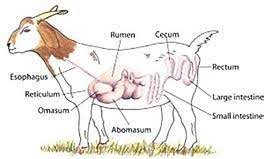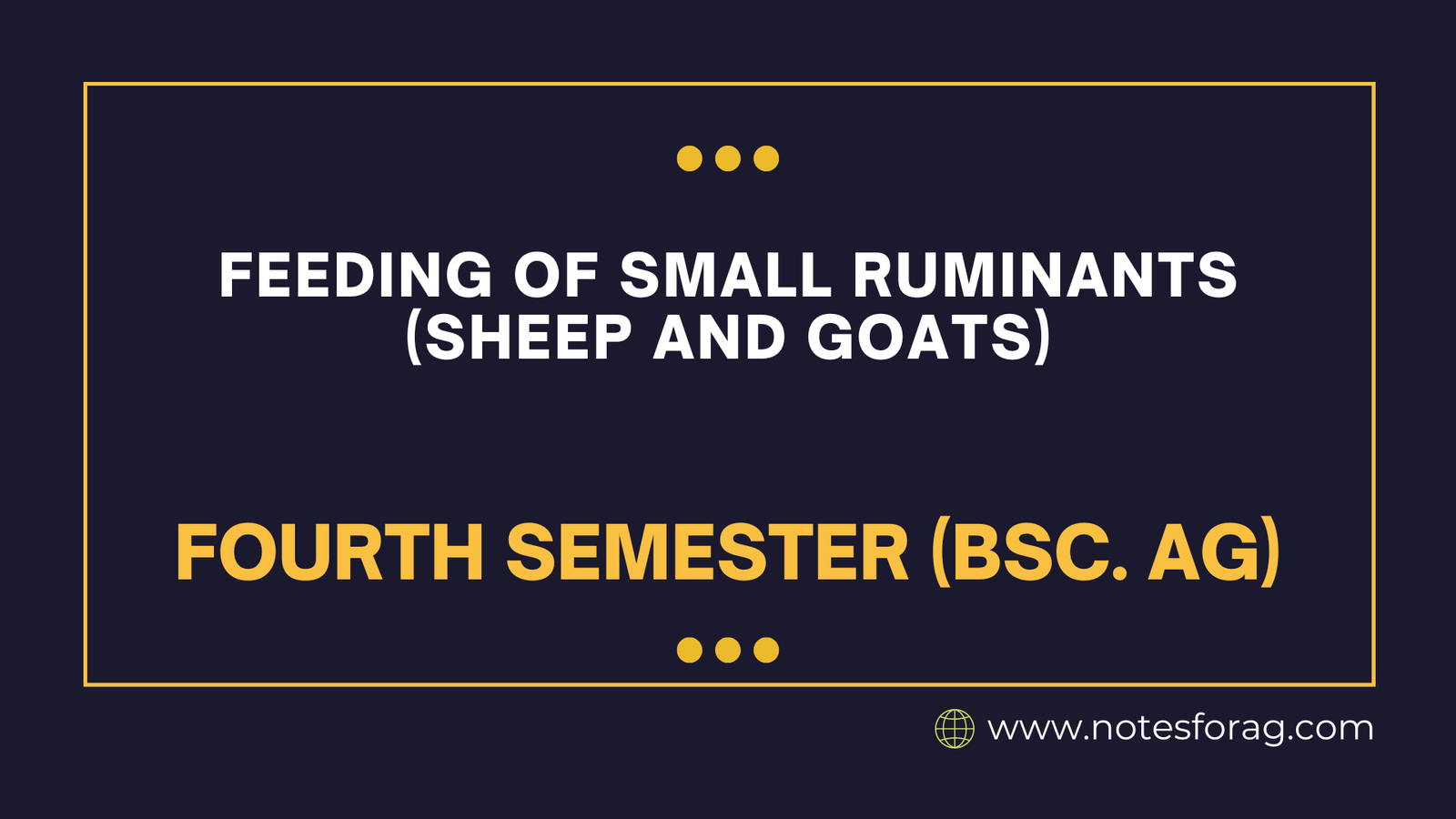Feeding small ruminants like sheep and goats is vital to their health, productivity, and overall well-being. Proper diet promotes healthy development, reproduction, and milk or meat production.
Table of Contents
Sheep and goats have similar dietary requirements, however due to variances in grazing behaviour and physiological needs, feeding strategies may need to be adjusted accordingly.

Nutritional Requirements for Small Ruminants
Small ruminants require a balanced diet that includes energy, protein, vitamins, minerals, and water. The basic nutrients they need are:
- Energy: Energy is required for normal bodily activities, reproduction, and production (milk or meat). It is derived from carbs and lipids found in forages like grasses and legumes, as well as cereals like corn, barley, and oats. Inadequate energy intake results in decreased growth and production.
- Protein: Protein is essential for muscular growth, reproduction, and breastfeeding. Protein sources include legumes (alfalfa and clover), oilseed meals (soybean meal), and commercial protein supplements. Sheep and goats require increased protein during phases of growth, pregnancy, and lactation.
- Vitamins and Minerals: Vitamins (A, D, and E) and minerals (calcium, phosphorus, magnesium, and salt) are required for a variety of metabolic functions. Calcium and phosphorus are essential for bone growth and milk production. Minerals such as selenium and copper should be fed in sufficient quantities but closely regulated because an excess can be hazardous, particularly in sheep.
- Water: Water is the most essential nutrient. Sheep and goats require fresh, clean water at all times. Their water intake rises during warmer weather, breastfeeding, and when they eat high-protein or high-fiber diets.
Types of Feeds
- Forages: Forages, which include grasses, legumes, and browsing, are the foundation of small ruminant diets. Sheep prefer to graze on grass, whereas goats are natural browsers and frequently consume shrubs, twigs, and leaves. Quality forages are essential for satisfying their energy and fibre requirements and promoting adequate digestion through their rumen system. When pasture access is restricted, good-quality hay, particularly legume hay, makes a great feed option.
- Concentrates: Concentrates, such as grains and protein supplements, are frequently used to supplement energy and protein levels, especially during times of high demand (for example, pregnancy, lactation, or growth). However, overfeeding concentrates can cause digestive issues such as acidosis, thus they should be introduced gradually and in moderate doses.
- Pasture: Rotational grazing on well-managed pastures is a productive and cost-effective approach to feed small ruminants. It lowers feed costs and ensures that animals get fresh, nutritious fodder. Goats browse above ground, which lowers the danger of parasite ingestion compared to sheep, who graze closer to the dirt.
- Supplements: Mineral blocks or loose mineral supplements should be readily available to guarantee optimal trace mineral intake. Special supplements, such as salt licks with additional minerals, can assist balance the diet, especially for animals fed low-quality fodder.
Feeding Management
Feeding small ruminants requires careful planning and monitoring to meet their nutritional needs throughout various stages of their life cycle.
- Lactating Females: Ewes (female sheep) and does (female goats) have higher energy and protein requirements during lactation. Providing high-quality forage supplemented with concentrates ensures sufficient milk production for their offspring.
- Growing Animals: Young lambs and kids (young goats) require high-protein diets for rapid growth. They should have access to creep feed (a specialized feed for young animals) and high-quality pasture to support their development.
- Breeding Season: During breeding, the nutritional needs of both males (rams and bucks) and females increase to ensure successful reproduction. A diet rich in energy and protein is essential for optimizing fertility.
- Winter Feeding: In areas with cold winters or limited pasture availability, supplemental feeding becomes necessary. Stored hay and silage are common winter feed options. Proper storage of these feeds ensures they remain nutrient-rich and free from mold or spoilage.
Common Challenges
- Parasite Control: Grazing on contaminated pastures can expose small ruminants to internal parasites, particularly sheep, who are more vulnerable due to their grazing habits. Rotational grazing and adequate deworming programmes are vital for reducing this risk.
- Feed Costs: Feed can be a significant expense in small ruminant production. Efficient pasture management, including rotational grazing and forage conservation, helps reduce reliance on purchased feed.
- Toxic Plants: Goats, in particular, may browse on toxic plants. It’s important to monitor pastures for potentially harmful vegetation and provide safe, alternative feed if necessary.
Conclusion
Feeding small ruminants involves a thorough grasp of their nutritional requirements and behaviour. Farmers can assure their sheep and goats’ health and production by providing a balanced diet of forages, concentrates, and vitamins, as well as carefully regulating grazing and feeding techniques. Proper feeding not only promotes growth and reproduction, but also helps to prevent nutritional shortages and diseases, resulting in better overall performance and economic benefits.
Frequently Asked Questions (FAQS)
What are the feeds and feeding of sheep and goats?
Grass and hay, sometimes referred to as roughage, provide the majority of the animals’ nourishment and energy. However, goats and sheep are also fed animal cereals such as oats, corn, and barley, particularly during pregnancy or lactation.
What is the basic nutrition of small ruminants?
The forestomach and small intestine absorb the majority of the simple chemicals produced by the digestion of carbs, proteins, and lipids. Small ruminants need calories, protein, vitamins, minerals, fibre, and water.
What is the feeding method for goats?
Goat feed must be clean and fresh, and it should always be kept in a trough. Keep the troughs clean by removing any leftovers. When feeding hay, store it in hay racks or hang it in bundles from a tree or a post in the wall.
Related Articles

